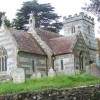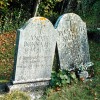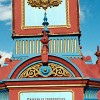“I have done my duty, thank God, Kiss me Hardy.” The last words have resonated across two centuries, and were there ever any, spoken by an Englishman, more famous than these? Then Admiral Nelson expired, mortally wounded by a musket shot fired from the French warship ‘Redoubtable.’ Thomas Masterman Hardy, his first officer, had the honourable distinction of having Britain’s greatest naval hero dying in his presence, if not his very arms. The place was the surgeon’s quarters of the flagship HMS Victory; the occasion, the last phase of the most famous sea battle in British history.
But the Battle of Trafalgar, fought over two hundred years ago, probably owes its triumphant outcome as much to Hardy as to the admiral under whom he so lovingly served. Writing after the event, Hardy noted “it has cost the country a life no money can replace, and whose death I shall forever mourn.” Hardy was a witness to Nelson’s last will and testament, and bore the colours at his funeral. He was made a baronet in recognition of his gallant service at Trafalgar, receiving also the gratitude of parliament, a gold medal, and swords of honour from the City of London and the Patriotic Fund.
Such accolades would likely not have surprised Nelson had he lived to see them bestowed. There had been a long tradition in his family that young Tom told his parents as soon as he could talk that he was determined to be a mariner. He grew into a well-built man with the potential to be a fine sailor of officer material and of good character. He was also courageous and daring, at least once setting off in rough seas in a lifeboat in an attempt to rescue a man overboard. Hardy had an instinct for doing the right thing at the right time, and took great pains to master every technical detail of proficient seamanship.
Hardy’s paternal ancestors were minor squires of the Melcombe area, descendants of the le Hardi’s, Norman French immigrants from the Channel Islands who spread into south Wessex in the 16th century. We find a Joseph Hardy in possession of the principal house in Portesham in the mid 18th century; it was his son Joseph Jr. who married Nanny. They were Thomas Masterman Hardy’s parents.
On his mother’s side Thomas was descended from the Masterman family, then tenanting Kingston Russell House near Long Bredy. Indeed, Joseph and his wife occupied this home for some years and it is generally believed it was here, on April 5th 1769, that Thomas was born, though obituary information credited to his elder brother states that he was born at his maternal grandfather’s home in Martinstown, near Maiden Castle. Thomas was the sixth of his parent’s nine children and their second son. The children’s grandfather, the elder Joseph, died in 1778, the family then leaving Kingston House to take his place in residence at Portesham.
Few details of Thomas’s childhood survive, though it was noted that he would often climb the hills above Portesham to gaze across the Channel that some twenty years later he would be helping to defend. With the Portesham house now crowded out with many children the Hardy boys were packed off to Crewkerne Grammar School over the border in Somerset. Here, under the headmasterships of Dr Patch and Dr Aske, Thomas received his spartanly disciplinarian, though not inefficient education.
When he had been at Crewkerne for three years a wish of Thomas’s – that he should be able to go to sea at the first opportunity – was fulfilled. Captain Francis Roberts of Burton Bradstock, long an acquaintance of the family, agreed to take Thomas on as an apprentice aboard his brig, HMB Helena on November 30th 1781. From then on Hardy’s general education took second place to his naval apprenticeship, though protracted periods of shore leave did enable him to return to school, as Roberts intended, “to learn navigation and all that is proper to a sailor.” Later, Roberts and Hardy transferred to the Seaford until April 1783 when Thomas returned to shore, first to attend Milton Abbas Grammar School and then to undertake a short period of training in the Merchant Service.
Hardy’s induction into seamanship in the Merchant Service continued until 1790 when he re-entered the Navy as a midshipman under Sir Alexander (Lord) Hood on the Hebe. That year he was promoted to Master’s Mate and went on to serve on the sloop Tisiphone with Captain Anthony Hunt. In 1793, still a midshipman, Hardy transferred to the Amphitrite, a ship of Lord Hood’s fleet, for operations against the Spanish in the Mediterranean.
By mid-November 1793 Hardy was a Lieutenant serving on the Meleager frigate, a vessel of Nelson’s squadron then under Captain Tyler, but replaced in June 1794 by Captain Cockburn. It was therefore about this time that Hardy was introduced to Nelson. By then he had matured into a slow, cautious and tranquil naval officer of genial humour, both fearless and tenacious.
Hardy’s next significant posting came in August 1796 with Cockburn on the Minerve. This year there was an engagement with two Spanish frigates during which Hardy courageously raised his colours to draw the Spaniard’s fire upon himself, thus enabling Nelson to withdraw to safety. However, Lieutenants Culverhouse and Hardy, with 40 other crewmen, were taken captive aboard the Santa Sabina. The next morning the Spanish fleet was reinforced, compelling the admiral to make his escape. The prisoners were later transferred to the Terrible, from where they disembarked at Gibraltar on 29th of January 1797. Here, Hardy and the crewmen were able to re-join Nelson on Minerve, which sailed from Gibraltar on February 11th, pursued by Spanish ships.
Nelson was taking the Minerve to rendezvous with Admiral John Jervis when a crewman fell overboard. Hardy immediately had himself lowered in the jollyboat to attempt a rescue, but the current took the boat astern towards a Spanish ship. Nelson averted Hardy’s capture by ordering the mizzen topsail to be backed. This bold action caused the Spaniard to shorten sail, enabling Hardy to be picked up, though the crewman could not be saved.
The Minerve reached Jervis in time for the Battle of Cape St. Vincent on the morning of February 14th. Nelson and Hardy’s conduct in the battle earned high praise. On June 16th Hardy, now a Flag-Captain, captured and was appointed to command the Mutine at Santa Cruz, then sailed for Aboukir Bay, Egypt, where Nelson drew up his plan to impound the French fleet for the Battle of the Nile in 1798. Here 13 of the 17 French ships were destroyed or captured.
That August Hardy was promoted to Captain of the Vanguard, in which he served before transfer to the Foudroyant under Nelson in Naples and Sicily in 1799. Two years later Nelson gave the French another mauling at Copenhagen, forcing the French commander Villeneuve to flee with the Vanguard in pursuit.
The 1802 Treaty of Amiens wrought a brief and fragile truce between the three powers, but Napoleon had styled himself Emperor and had trampled the whole continent underfoot. Only the British navy stood between him and the imperial domination of all Europe. He conceived a plan to cajole Spain into an alliance, and then build up a coalition armada in the West Indies, which would then re-cross the Atlantic and deliver a decisive blow against an outnumbered British fleet.
In May 1803 Hardy in the Victory attempted to blockade Villeneuve in Toulon harbour, but a strategy of keeping his distance enabled the French to break the blockade in April 1805 and leave the Mediterranean to head for the West Indies. Nelson gave chase, but contrary winds slowed the admiral’s progress. By June the French were nowhere to be found in the Caribbean, having re-crossed the Atlantic to put in at El Ferrol in Spain.
Nelson learnt that on September 2nd the French and Spanish fleets had assembled at Cadiz. Two weeks later Nelson and Hardy joined the rest of their fleet off Cadiz. The Napoleonic armada put to sea on October 18th in an attempt to head into the Mediterranean. Off Cape Trafalgar, on Nelson’s orders, the British fleet split into two columns, one led by Admiral Collingwood on the Royal Sovereign, the other by Nelson with Hardy on the Victory.
Engaging the Redoubtable, the Victory’s yardarm entangled in the enemy’s rigging. Sharpshooters on the Redoubtable took aim at figures on the deck. What happened next could so easily have turned out differently, since the French were firing semi-blind through a smokescreen; if Hardy had been hit instead of Nelson, his story would have ended here. After Nelson fell, Hardy took command of the Victory until Collingwood could relieve him. Amazingly no British ship was lost at Trafalgar – the French lost 18 destroyed or captured. There were 1,700 British casualties; 6,000 of the enemy were killed or wounded.
Clearly Trafalgar was a resounding British victory, but for Hardy it came at the expense of a great personal loss. Nelson, a Norfolk rector’s son, and the Wessex countryman would seem unlikely duo for a binding friendship. They had in common a ‘lust for brine’ from an early age but were in most other respects opposites. Hardy was tall, broad, robust in health and came through 58 years of naval service unscathed; Nelson was physically unimposing, prey to several minor ailments (including sea-sickness!) and had lost an eye, an arm and most of his teeth. Hardy was of strong character, humorous, and had many sterling qualities; Nelson could be morose, sexually over-passionate, despondent and suicidal.
For the rest of his life Hardy remained active in the service, though he would raise his colours at sea for the last time in 1827. He went on to captain the Triumph in the North American Station in 1806 and on November 17th the following year married Anne Louisa Emily Berkeley. From 1809-12 he was Commander-in-Chief at Lisbon, with the rank of Commodore of the Barfleur of the Portuguese service. From 1812-13, when Britain and the USA fought a naval war, Hardy commandeered a squadron from the Ramillies on the North American Station.
For three years from 1815 Hardy captained the Royal Yacht Augusta, and that year was awarded the KCB. In 1816 he fought a duel with the first Duke of Buckingham. From 1819-24 he was Commander-in-Chief of the South American Station, during which time (1821) he served as a Colonel of the Royal Marines. He was Rear Admiral of the Blue in 1825. In 1826 he escorted an expeditionary force to Lisbon and commanded an experimental squadron in 1827.
1830 saw Hardy as Rear Admiral of the White and then First Sea Lord. In September 1831 he was awarded the GCB. In April 1834 he was appointed Governor of Greenwich Hospital and on 10th January 1837 was made Vice-Admiral of the Blue.
Sir Thomas Masterman Hardy died on September 20th 1839, and was buried at Greenwich Hospital. There is a memorial at St. Paul’s, but his native county did not forget him. In 1844 an octagonal tower 70 feet high was raised upon Blackdown Hill near his beloved Portesham, 770 feet above the level of the English Channel he had so often gazed across with eager eyes when just a boy.
Footnote:
On a day in August 1805, 2 months before Trafalgar, a crowd has gathered by Gloucester Lodge in Weymouth. A man wearing a blue uniform of a naval officer, gilt epaulettes, cocked hat and sword, acknowledges the cheers of those who have come to see this local hero. He is Captain Thomas Masterman Hardy, the Captain of Nelson’s ship Victory and he is in Weymouth at the King’s command to tell his Majesty of Nelson’s latest voyage. A few days later Capt. Hardy boards a coach at Dorchester for Portsmouth where he joins Nelson on board the Victory.



